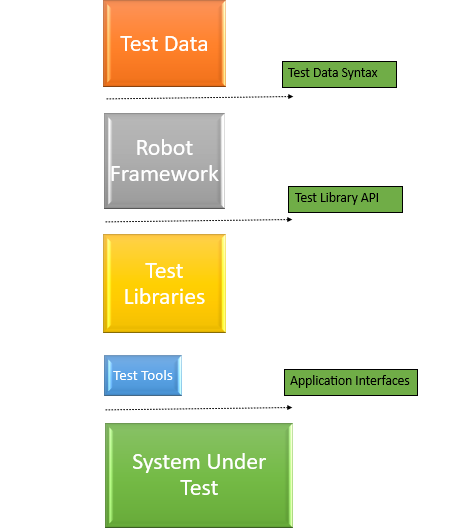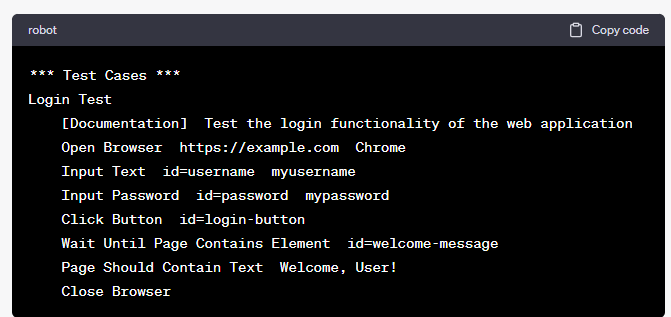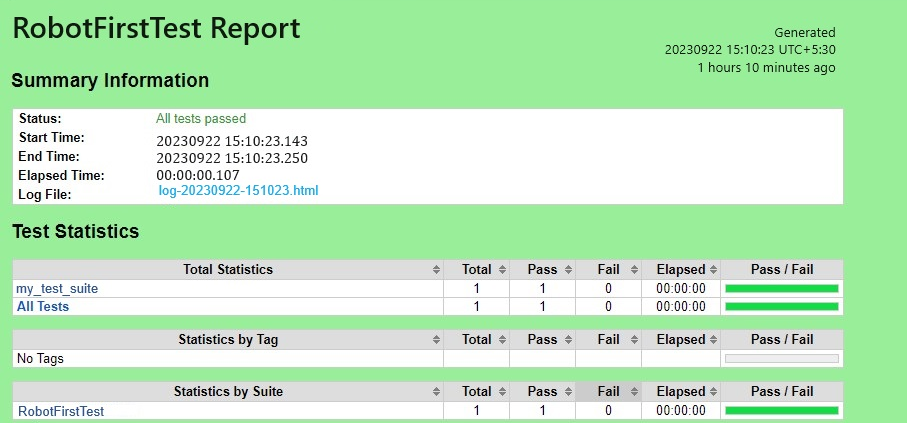Overview of Robot Framework
Introduction
For newbies, the world of automated testing might be intimidating. But do not worry, the Robot Framework will make the transition to automated testing simple. In this blog post, we’ll demystify the Robot Framework in simple language so that even if you’re unfamiliar with testing or programming, you can still understand the fundamentals.
What is the Robot Framework
The Robot platform is primarily an open-source platform for acceptance testing and acceptance test-driven development (ATDD). Robot Framework also helps to do Selenium testing with a keyword-driven approach. For constructing test cases and test suites, it offers a straightforward and accessible syntax. Consider it a tool that enables you to automate software application testing by simulating user interactions with the program.
Purpose of Robot Framework
Through acceptance testing, it is determined whether a system satisfies the requirements and needs established by users. In order to determine if the end users can utilize the system under test, we do acceptance testing, which involves high-level verification of the entire system as a single unit.
Test engineers take on the role of system users by running through scenarios and stages derived from requirements and business processes using a preset set of keywords. Keyword-driven testing is a method of testing that is based on a collection of keywords that may be utilized in all tests.
Robot Framework contains a wide range of internal and external libraries, as well as a large number of helpful keywords that you may reuse in your ecosystem. But don’t panic; if you can’t find the term you’re looking for, you can create your library. The Robot Framework allows for the creation of tests in Python and Java.
Key Components of the Robot Framework
Test cases: Testing process building elements are known as test cases. The precise scenario or feature one wishes to test in the application is represented by each test case. Test cases are easy to construct and comprehend because they are presented in a straightforward, understandable style that mimics plain English.
Keywords: Using keywords in your test cases is similar to reusable functions or actions. They include particular operations like pressing a button, typing in text, or checking data. In addition to the built-in keywords provided by Robot Framework, you may generate unique keywords specific to your application.
Test suites: These are groups of test cases arranged for execution. To guarantee effective testing coverage, you can combine related test cases into test suites. Multiple test cases may be managed and run sequentially with the aid of test suites.
Libraries: Beyond what is included in the Robot Framework, libraries offer extra functionality and keywords. For activities like database testing, API testing, or dealing with certain software technologies, libraries can be used.
Prerequisites for the Robot Framework
First, we must follow the guidelines below:
1. Install Python 3.11.x or a later version.
2. Set up pip, the Python package management.
3. Download a development environment. Since code snippets are not IDE dependant, you are free to use any IDE of your preference.
Robot Framework Architecture
The robot framework is platform-independent. The robot framework may run on JPython (JVM) and IronPython(.NET) in addition to Python.

The framework processes the test data and creates logs and reports in an easy-to-edit format. The libraries manage the interface and can test the target using extra test tools as drivers.
Installation
Using pip is the suggested method for installing the robot framework on Python. To install the framework, run the following command.
![]()
Verifying Installation
Using the -version option, you will be able to view the versions of the robot framework and the interpreter following a successful installation.
![]()
![]()
Standard Libraries
The robot framework comes with the following test libraries.
- Built In
- Collections
- Date Time
- Dialogs
- Operating System
- Process
- Remote
- Screenshot
- String
- Telnet
- XML
Built-in Tools
The robot framework comes with a few supporting tools in addition to the main test execution engine. The Python robot framework comes with the following built-in tools.
- Reboot
- Libdoc
- Testdoc
- Tidy
Now let us see a simple Robot Framework test case for a hypothetical web application that will test the login functionality:

In this example:
- Open Browser opens a Chrome browser and navigates to the website https://example.com.
- Input Text and Input Password fill in the username and password fields with the provided values.
- Click the Button on the login button.
- Wait Until Page Contains Element waits until an element with the ID “welcome-message” is present on the page.
- Page Should Contain Text checks if the page contains the text “Welcome, User!” to verify a successful login.
- Close Browser closes the browser after the test is complete.
This test case would need to be modified to fit your unique application’s HTML structure. To properly execute this test case, install Robot Framework and any other required libraries, such as Selenium.
Running Tests with Default Reporting
Now, let’s focus on the default reporting capabilities of Robot Framework. Robot Framework automatically creates reports with an easy-to-read layout when you run your test cases. You may get the default report and run your tests in the following ways:
1. Open your command prompt or terminal.
2. Navigate to the folder containing your Robot Framework test suite file (e.g., my_test_suite.robot ).
3. Run your tests using the following command:
![]()
4. Robot Framework will execute your test cases and generate a report in HTML format. You can find the report file in the same folder as your test suite file, usually named report.html.

Benefits of Using Robot Framework’s Default Reporting:
- Clarity: Default reports are simple to read and include concise details regarding test case outcomes.
- Accessibility: Even team members unfamiliar with coding can study reports to assess test results.
- Visualization: Visual representations, such as pass/fail signs and thorough logs, help to quickly spot the issues.
Advantages of Robot Framework
- User-friendly: It is accessible to non-programmers due to its simple English-like syntax, allowing testers and subject matter experts to participate in the automation process.
- Extensible: Its functionality may be increased by adding custom keywords or integrating external libraries, making it appropriate for various applications and technologies.
- Cross-Browser and Cross-Platform Support: It may test web and mobile applications across various browsers and platforms.
- Reporting and logging: Robot Framework offers thorough reports and logs, making it simple to spot problems and track the progress of tests.
Conclusion:
Robot Framework is an effective and user-friendly tool for automating testing procedures. It is the best option for organizations trying to increase the effectiveness and dependability of their testing due to its readability, extensibility, and cross-platform compatibility. The Robot Framework is a useful addition to your toolset, regardless of your level of testing experience or experience as an experienced automation engineer.



